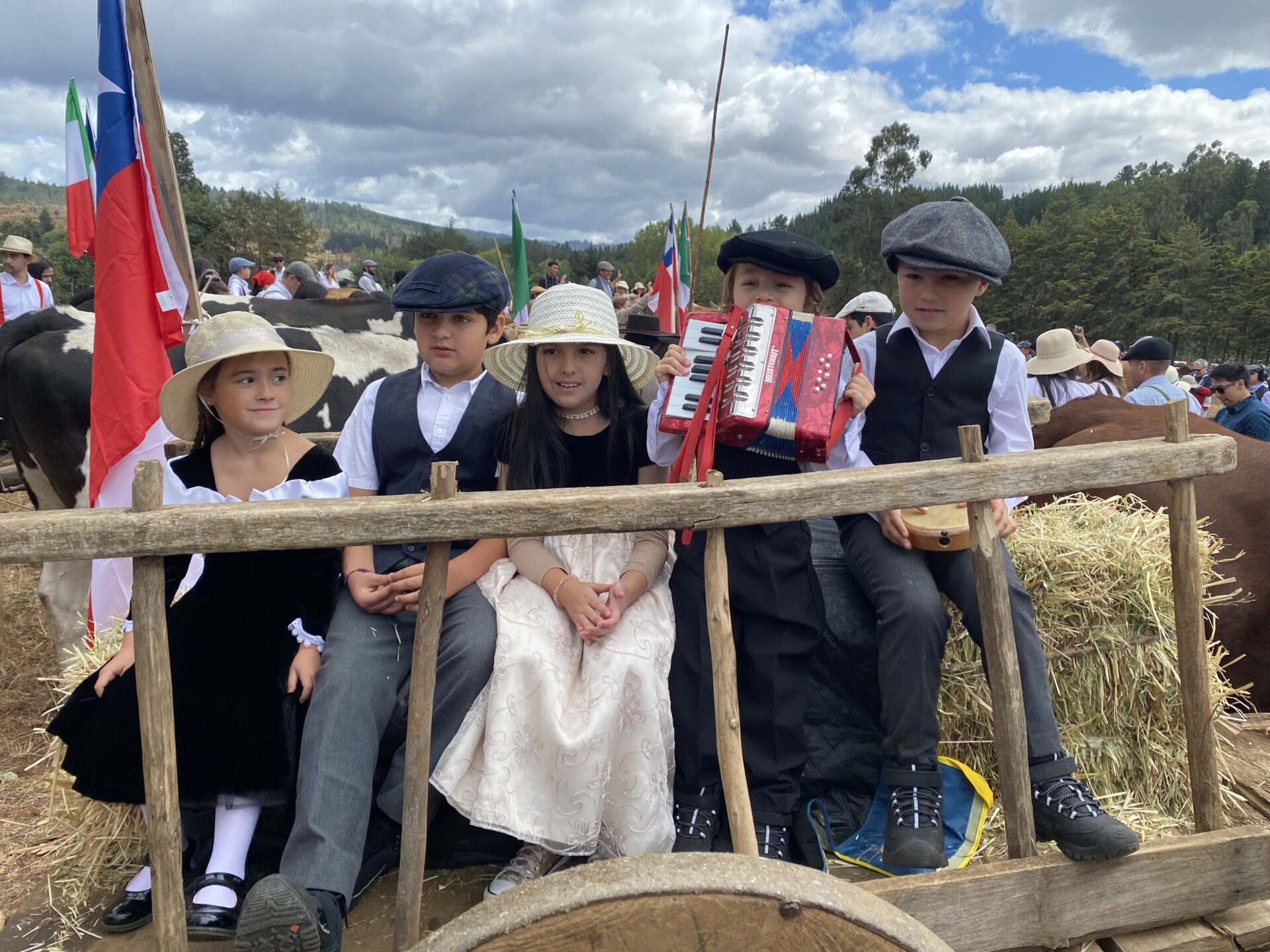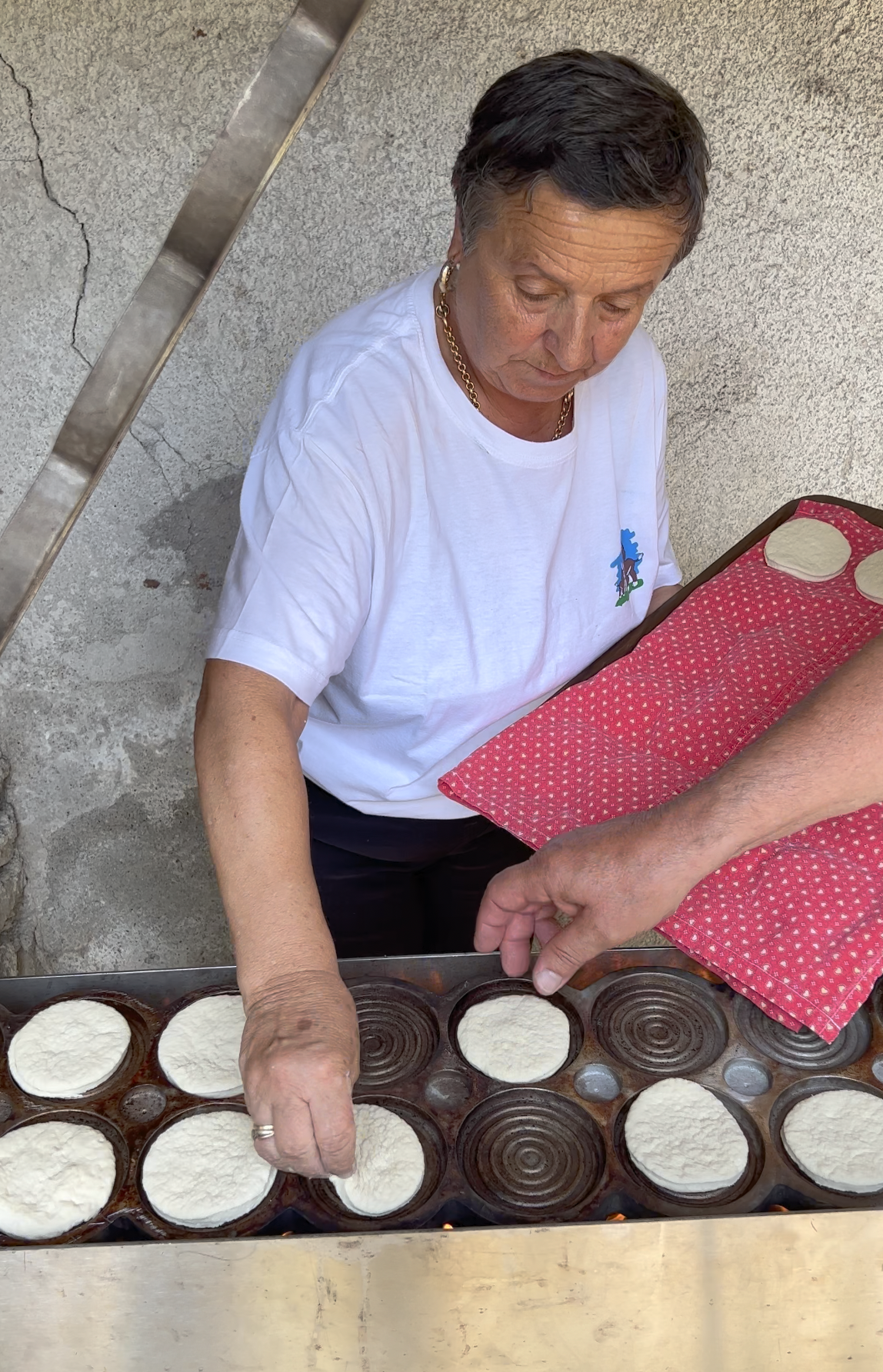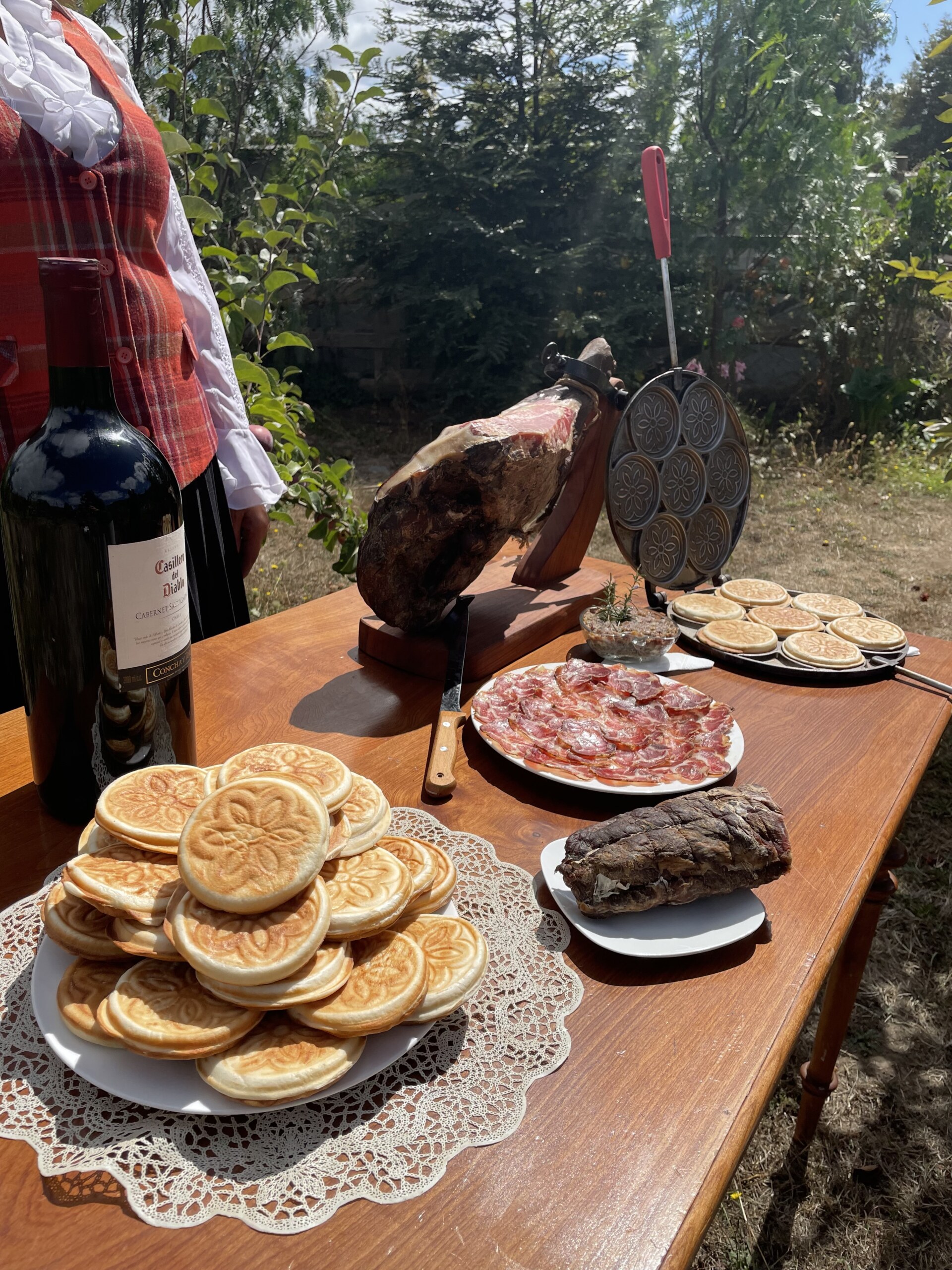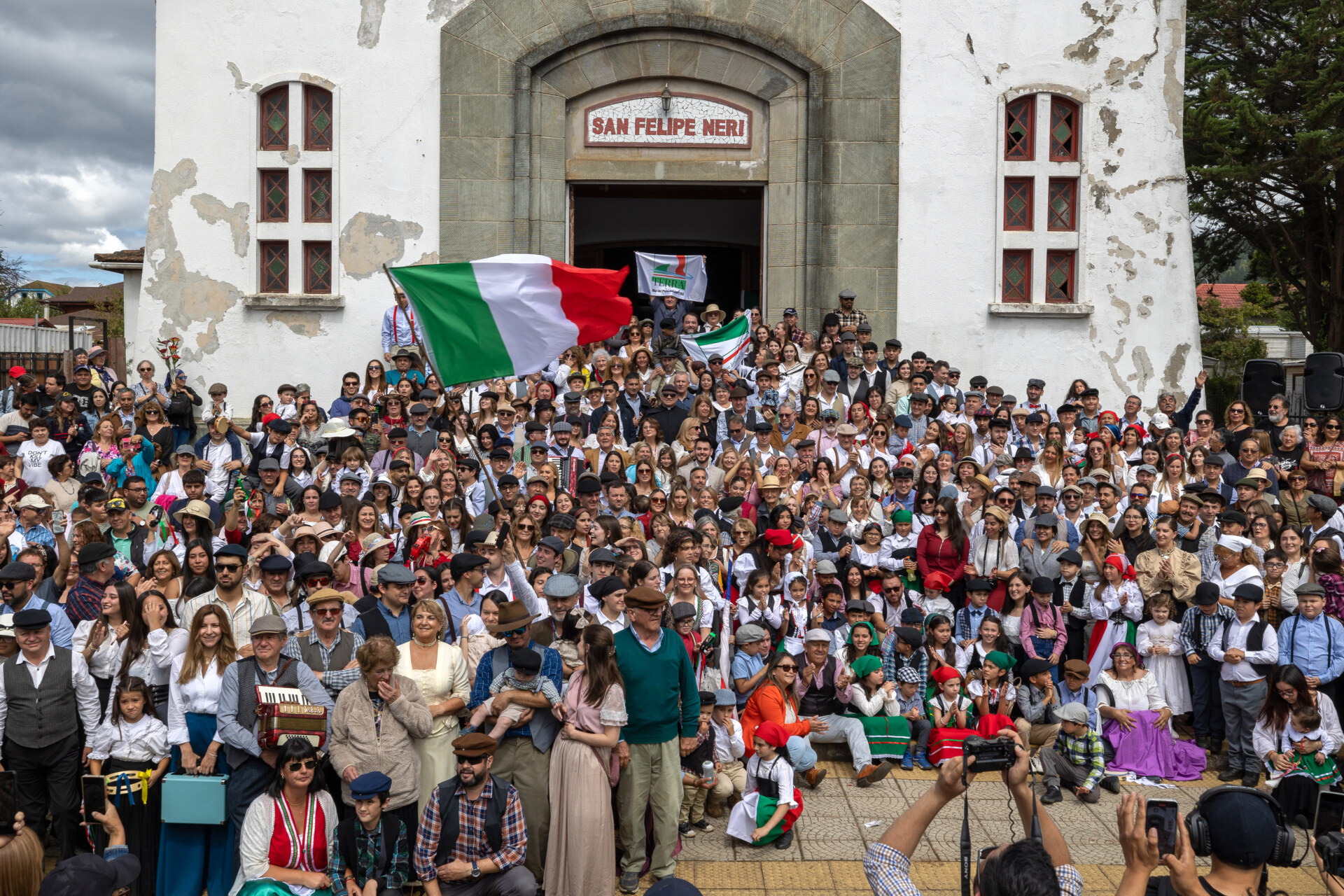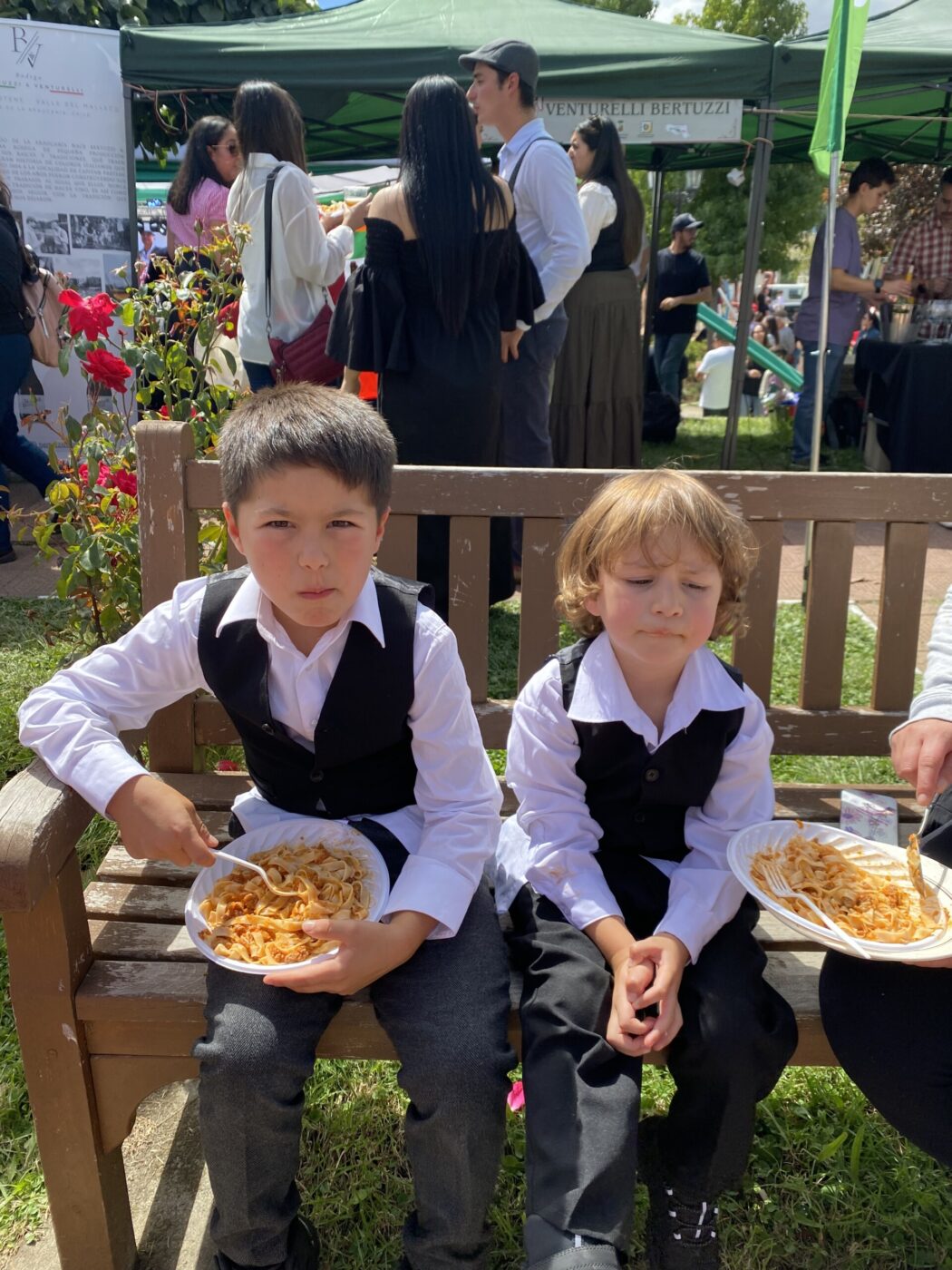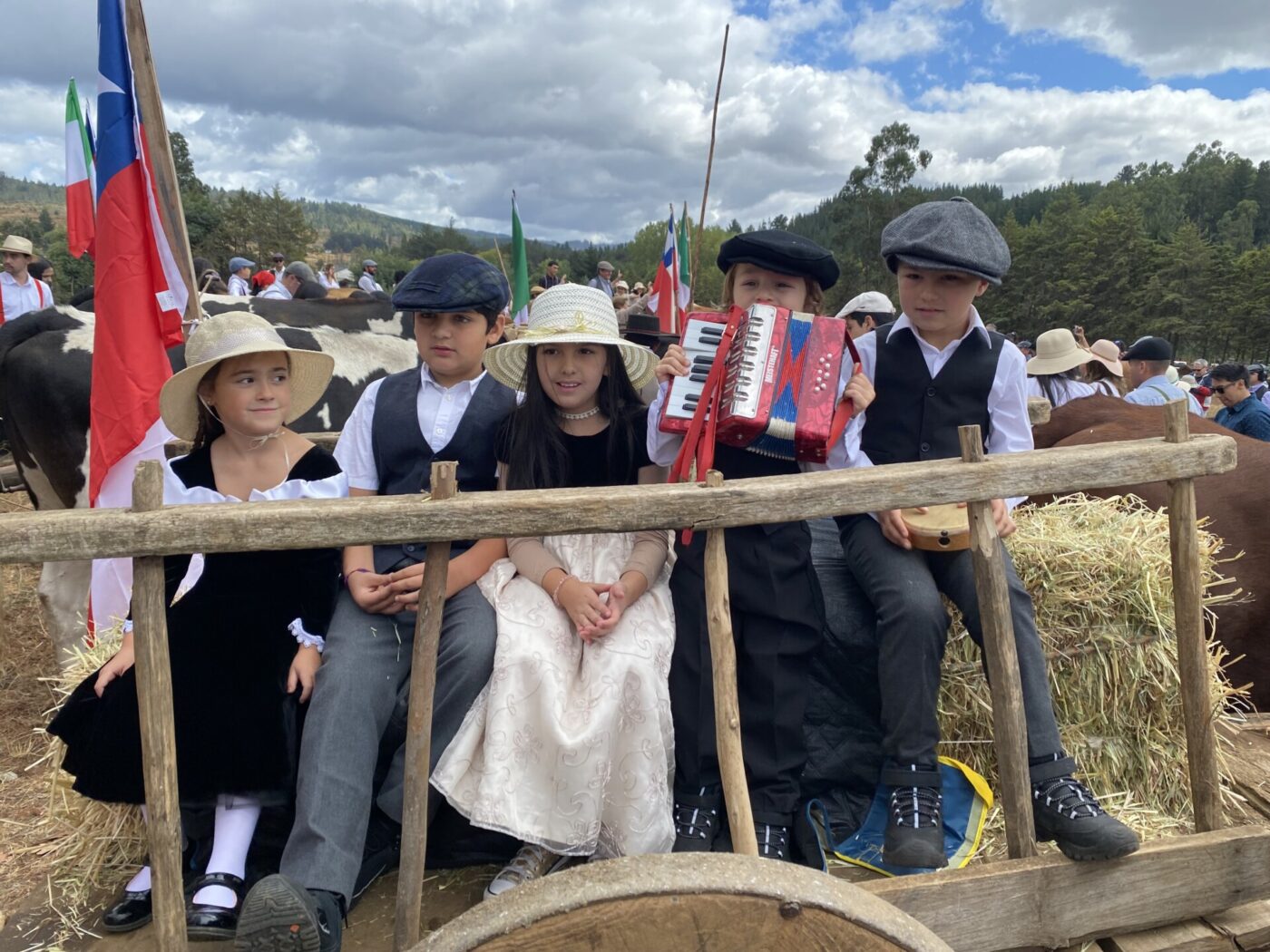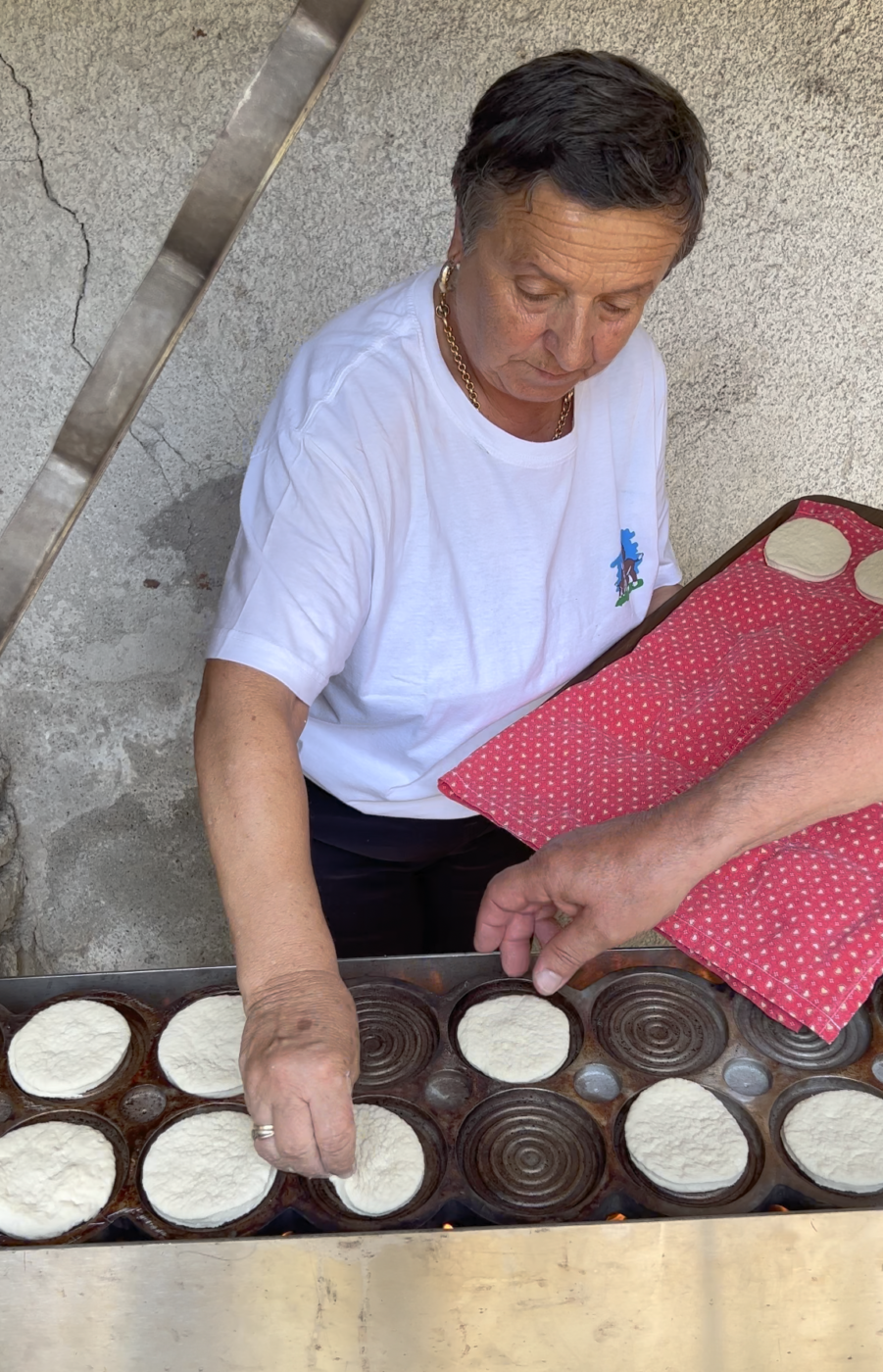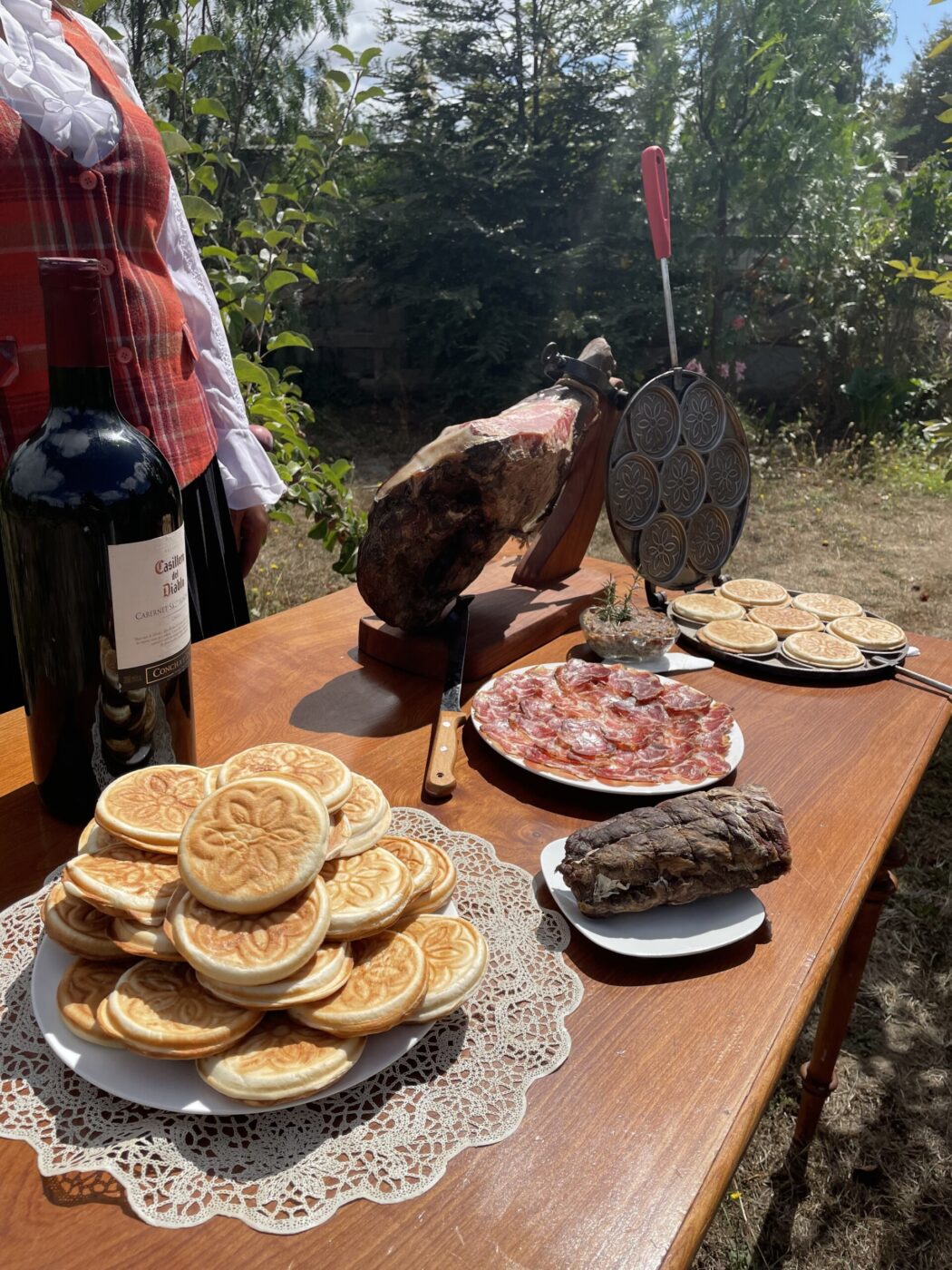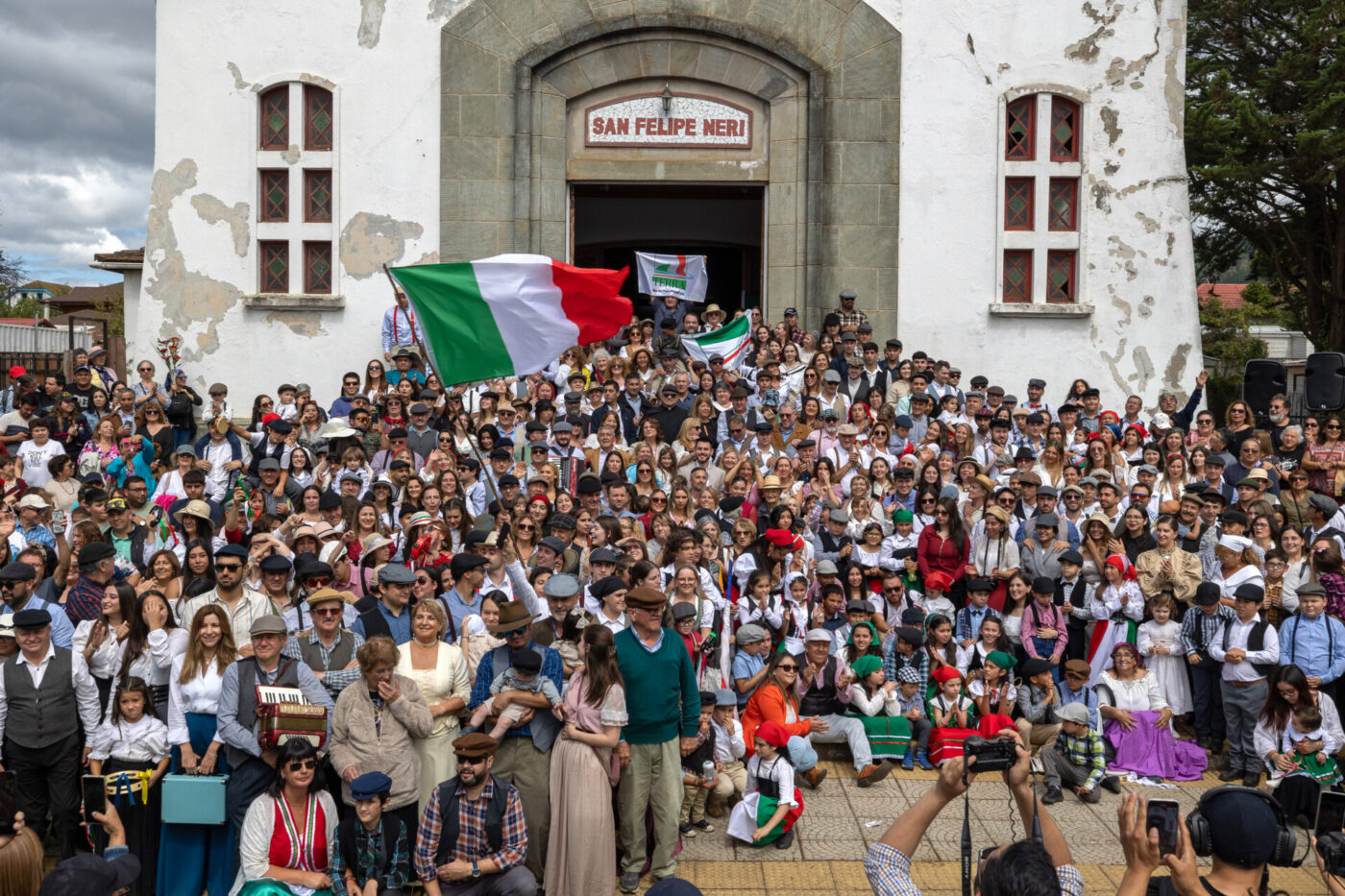Emilia-Romagna is a region where past political divisions between communist social clubs (“circoli“) and the interests of the Christian Democrat party (“democristiani“) tied to local parishes have, in recent years, been replaced by a more delicious kind of competition: food feuds. These days, the most heated debates are about the right way to name hyper local specialties, tortellini in competition with cappelletti, gnocco fritto fighting torta fritta. In Modena, crescentine–small, round flatbreads filled with cured meats and cheese–are increasingly called tigelle, a misnomer that comes from the terracotta disks originally used to cook them. The Instagram account @dontcallmetigella, or the Movement for the Correct Use of Tigella, is fighting this inaccuracy.
Meanwhile, over 12,000 kilometers away, Beatriz Leonelli Neira is peacefully cooking what she calls carcentas (pronounced “car-sen-tas” with a Spanish accent), unaware of the naming feud over these flatbreads back in Italy. She learned the recipe from her grandmother, Elisa Covili Cantergiani, who traditionally cooked them on the aforementioned terracotta discs. Beatriz now uses a cast-iron tigelliera for convenience, but the essence of her carcentas remains the same: the palm-sized flatbreads are cut in half and filled with a rich mixture of ham, coppa, pancetta, garlic, rosemary, and cheese, known as “pesto”–not to be confused with the basil version.
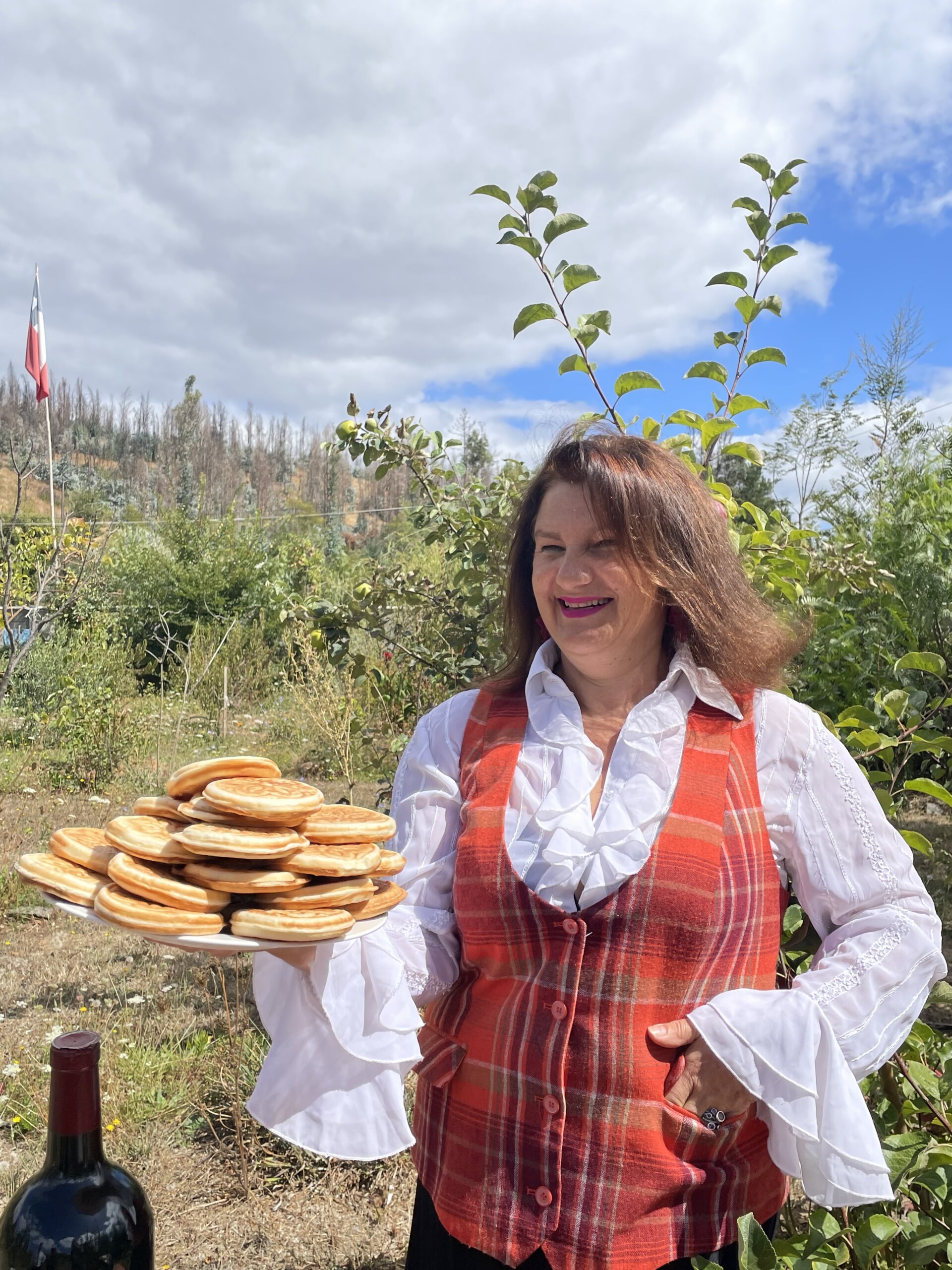
Beatriz Leonelli with her carcentas; Photo by Daiha Manriquez Leonelli
Carcentas/crescentine are not the only Emilia-Romagnan delicacy to grace the kitchens of Beatriz’s hometown Capitán Pastene, a village in southern Chile’s Nahuelbuta mountains where a group of emigrants from Modena’s Apennine mountains found a new home in the early 20th century. It’s a community that can all be traced back to one Giorgio Ricci; Giorgio, who had been living in Chile, spun a tale of fertile lands, persuading his fellow Modenese to relocate. Between 1904 and 1905, 88 families, mainly from the towns of Zocca and Pavullo, undertook the draining 32-day voyage to Chile, tempted by promises of prosperity. Upon arrival, it was clear that Giorgio had a knack for hyperbole: rather than fruitful fields, they found dense, uncultivated forests–what, in fact, the ancestors of these Modenese had also found in Italy’s Frignano mountains, clearing them to found the first communities in the area. Going back was hardly an option, and so the emigrants persevered, establishing a new community they named “Nuova Italia” (later to become Capitán Pastene). And their legacy lives on.
From the roughly 70% of residents with Italian ancestry to the familiar surnames adorning doorways (Balocchi, Leonelli, Venturelli), the village’s Modenese face is not hard to find. Capitán Pastene is a small and charming village, the streets wide, long, and lined with large, beautiful wooden houses. In the center of the village is, of course, a church, the Iglesia de San Felipe Neri, but also the oldest cinema in all of South America, the Cinema Pastene, where films by Fellini, the iconic Emilian-Romagnolo director, are still shown.
“The seasons are a bit like in Italy, but in reverse and without the winter snow that graces the Modena mountains,” says Patricio Fulgeri, a descendant of Italians from the village of Verica (in the municipality of Pavullo). I can’t bring myself to destroy his idyllic vision of Modena’s snow-capped peaks–a memory, alas, fading with the times (climate change, you know!).
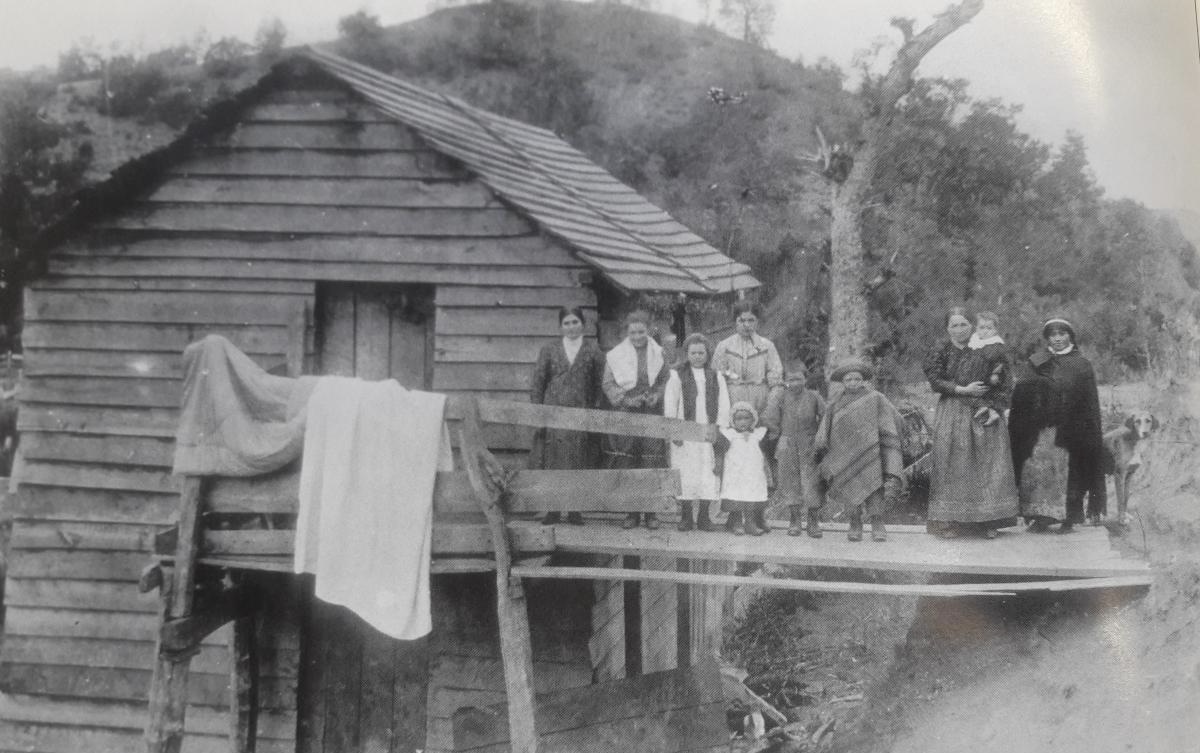
A family from Vignola and a Mapuche family in 1905; Photo courtesy of MigrER
Patricio owns one of the village restaurants, L’Emiliano, following a trend that was initiated just 20 years ago by the charismatic Don Primo Cortesi; the latter founded trattoria “Don Primo” and a ham-aging facility in 2004 to celebrate the centennial of his ancestors’ arrival. His establishments quickly became key tourist attractions, drawing visitors from across Chile (including some high-profile celebrities and public figures), and bringing a new economy to a town that had previously relied upon the wood industry. These gastronomic efforts were so successful, in fact, that the Chilean Ministry of Economy has awarded Prosciutto di Capitán Pastene (more on this later) a Denomination of Origin.
Everywhere you turn, you’ll find dishes native to the Modena area: tortellini in capon broth, tagliatelle al ragù, carcentas, and rosette (pasta rolls shaped like little roses, stuffed with ham and béchamel–a Modenese treasure). While the spirit of Emilia’s cuisine stays strong, local ingredients take center stage–here, ricotta and mortadella give way to flavors of the Mapuche people, the indigenous group native to this part of southern Chile. The Mapuche, whose culture is deeply connected to the land, embraced the Italian emigrants, the two peoples exchanging culinary tips and tricks to create Italian dishes adapted to local ingredients. It’s not uncommon to find Mapuche rucas (homes) filled with the lovely aromas of Italian sausages, smoked ham, Chilean-style porotos con rienda (a typical Chilean dish with boiled beans, spaghetti, chorizo, diced pumpkin, chili, and onions) made with egg pasta, and even tortellini infused with merkén.
Merkén, a dried, smoked, and ground red chili pepper, is as good a symbol as any of the fusion between Mapuche and Modenese cultures. Italian emigrants first used the smoky spice in prosciutto production, for a deep flavor profile unlike any you’d find in Italy: the prosciutto now kicks off with a hint of citrus, then mixes saltiness with smoky, earthy pepper flavors. It was Primo Cortesi himself who first adopted this spice, proudly incorporating it into his tortellini recipe–a move that might have raised eyebrows. He was known for saying, “Let the Italians get angry” (we all know how touchy Italians can be about their food). Nowadays, merkén is a Slow Food Presidium and even tops pizzas in Capitán Pastene.

Digging into tagliatelle; Photo by Italo Piccioli
“The strong Italian influence and atmosphere of Frignano are unmistakable, evident in the delicious food and the faces of the people, instantly recognizable to visitors from the province of Modena,” says Mario Parenti, son of the late Antonio Parenti. Antonio, a councilor from the village of Pavullo, Modena, was the driving force behind the twinning of the Modenese and Chilean localities in 2000. Mario now carries on this legacy, organizing exchange projects with the schools, bringing children from Modena to Capitán Pastene and vice versa, to keep the cultural exchange alive.
This spirit of connection is also evident in the annual Sagra di Capitan Pastene, an event that, for the last 20 years, has celebrated the Modenese emigrants who, leaving their home villages in the Apennines, crossed the Atlantic and the Andes and built a new life. (If you’re unfamiliar with sagre, or food festivals, check out this story.) This year’s sagra–held between March 9th and 10th, the arrival dates of the two waves of migration–had an attendance of 12,000 people and, as always, typical dishes of Northern Italy were served, including carcentas (always a showstopper), polenta, pasta, pizza, and prosciutto. Local ladies from the Red Cross even set up a table to make tortellini together–much how they would in the kitchens of homes across Emilia.
Arriving in Capitan Pastene is like stumbling into a parallel universe of familiar faces, rolling pins straight out of nonna’s kitchen, rapid-fire tagliatelle chopping, and even chestnuts roasting just like back home. It’s as if a chunk of the Modenese mountains was picked up and dropped in Chile–same charm, just a bit smokier.
